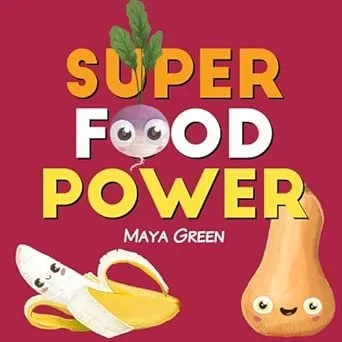Newsletter | November 2025
What’s On This Month
Key Dates
4th November | Melbourne Cup Day
6th November | Outdoor Classroom Day
10th - 16th November | National Recycling Week
11th November | Remembrance Day
24th November | Fairy Bread Day
Rememberance Day
At 11 am on 11 November 1918 the Western Front fell silent after more than four years of continuous warfare. Each year on this day Australians observe one minute’s silence at 11 am, in memory of those who died or suffered in all wars and armed conflicts.
Recipe | Spinach & Ricotta Fritters
Total Time: 20 min
Serves: 4
Ingredients
500 grams fresh ricotta
250 grams frozen spinach, thawed and squeezed of excess water (or 500 grams baby spinach, steamed)
1 cup parmesan
2 eggs
6 tbs plain flour
zest of 1 lemon
olive oil, to fry in
Method
1. Preheat oven to 180 degrees Celsius.
2. Place the ricotta, spinach, parmesan, eggs, plain flour and lemon zest into a large bowl and mix thoroughly to combine.
3. Heat a nonstick frypan to medium heat and drizzle in
a little olive oil. Use two tablespoons to ladle the batter into the frypan, cook for 2-3 minutes each side or until golden.
4. Place the fritters onto an oven tray lined with baking paper and bake for 5-10 minutes or until cooked through.
5. Allow to cool slightly before serving alongside a simple salad of chopped cherry tomatoes and ribbons of zucchini.
Source: Image & recipe mylovelylittlelunchbox.com.
Send Us Feedback
Want to have your say and improve our services?
Email us at contact@kidsfamilydaycare.com
Sustainability
Always Recycling
National Recycling Week is November 10 – 16! It is an initiative dedicated to promoting effective recycling practices across Australia. But it shouldn’t stop there. It’s not just a week-long activity - it’s a daily commitment! Remember to always check products and recycle items correctly.
If you are unsure or your local council doesn’t accept certain items that can be recycled, try one of these companies. The extra effort is worth it for our environment!
recyclesmart.com – Pick up what you are unsure of and get it recycled! No sorting, no landfill no guilt.
curbyit.com – Recycle your soft plastics, plastics are reused and repurposed.
upparel.com.au – Save unwanted clothing and material items from landfill to help close the loop on textile waste.
Bunnings.com.au – Recycle your batteries, keeping harmful substances out of the environment and recovering and reusing valuable natural resources.
SunSmart
A reminder that it is now Sun Smart season…
Hats
Educators, children, and visitors are required to wear sun safe hats at all times they are outdoors. Cancer Council Australia describes sun safe hats as:
Hats that protect a person’s face, neck, and ears, which include:
A legionnaire hat – the front peak and flap should overlap at the sides and the flap should cover the neck
A bucket hat with a deep crown and angled brim that is at least 5 cm for young
Children and at least 6 cm for adults and must shade the face, neck, and ears
A broad brimmed hat with a brim size of at least 6 cm for children or 7.5cm for adults.
The brim should provide shade for the whole face.
Please note: Baseball caps or visors do not provide enough sun protection and therefore are not permitted for outdoor activities.
Children without a sun safe hat will be required to play in an area protected from the sun.
They may be provided with a spare hat by the educator if available.
Clothing
When outdoors, educators and children will wear sun safe clothing that covers as much of the skin as possible. Cancer Council Australia recommends clothing that:
Covers the shoulders, back and stomach
Is loose fitting such as loose-fitting shirts and dresses with sleeves and collars or
Covered neckline, or longer style skirts, shorts and trousers.
Children who are not wearing sun safe clothing can be provided with spare clothing or will be required to play under shade or in an area protected from the sun or provided with spare clothing.
Please note: Midriff, crop or singlet tops do not provide enough sun protection and therefore are not permitted for outdoor activities.
Sunscreen
As per Cancer Council Australia recommendations:
Educators and children will apply SPF30 or higher broad-spectrum water-resistant sunscreen 20 minutes before going outdoors and reapply every 2 hours or more frequently if washed or wiped off
Permission to apply sunscreen is included in the KIDS FDC enrolment form where children have allergies or sensitivity to the sunscreen, parents are asked to provide an alternative sunscreen or a child will be required to play in the shade. A record of any allergy must be provided in writing from the parent/guardian and recorded on the child’s enrolment record. Cancer Council Australia recommends usage tests before applying a new sunscreen.
To help develop independent skills ready for school, children from three years of age are given opportunities to apply their own sunscreen under supervision of the educator and are encouraged to do so
Sunscreen is stored in a cool, dry place and the use-by-date is monitored.
Recommendations for babies from the Cancer Council Australia include:
Babies under 12 months will not be exposed to direct sun when the UV Index is 3 or above
Physical protection such as shade positioning, clothing and broad-brimmed hats are the best
Sun protection measures (the front peak and flap should overlap at the sides)
Check the baby’s clothing, hat and shade positioning regularly to ensure they continue to be well protected from UV.
If babies are kept out of the sun or well protected from UV radiation by clothing, hats and shade, then sunscreen need only be used occasionally on very small areas of a baby’s skin. The widespread use of sunscreen on babies under 6 months old is not recommended.
Monitoring UV Levels
Sun protection is required when UV levels reach level 3 or above. Educators will monitor the UV levels daily through one or more of the following methods:
Using the smartphone SunSmart global UV app
Using the SunSmart widget on the Service’s website available at www.cancer.org.au
Viewing the Bureau of Meteorology website http://www.bom.gov.au/
Visiting www.myuv.com.au
Educator of The Month
Congratulations to …
Heidi Southwell
Wunghnu
Coordinator: Kristen Baker
Heidi brings heart, creativity, and dedication to everything she does, creating a child-led learning environment where every child feels valued, capable, and inspired to explore the world around them. She takes the time to listen to children’s ideas, follow their interests, and help them turn curiosity into meaningful learning experiences.
Living and working in a regional community, Heidi understands the unique challenges that some families and children face, especially where resources and support can be limited. She goes above and beyond to build strong, trusting relationships with families, offering a listening ear, practical help, and genuine care for each child’s wellbeing. Her warmth and compassion make her not just an amazing educator, but a true support for the whole community.
Heidi is also incredibly reliable and organised, always on top of her documentation and planning. She takes her responsibility for children’s safety seriously, making sure her practice reflects the Child Safe Standards every single day. Her commitment to creating a safe, welcoming, and nurturing environment shines through in everything she does.
We’re so lucky to have Heidi as part of our team. Thank you for all that you do to make our program such a positive, supportive, and inspiring place for children and families!
Books we Love
Our Top Picks
Air Dry Clay
Introduce children to the sensory joy of sculpting with air-dry clay! A fun, calming way to build fine motor skills and creative expression.
You will need:
Air dry clay
Natural items (sticks, petals, shells…)
Provide each child with a small ball of clay and invite them to roll, pinch, flatten, and shape it into their own creations such as animals, flowers, or simple bowls.
Encourage the use of natural or recycled items like leaves, shells, or sticks to press patterns and textures into the clay.
Once finished, leave the creations to dry for a day or two, then children can paint or decorate them.
This activity encourages imagination, coordination, and an understanding of form and texture, while giving children a lasting piece of art to proudly display or gift.
TIP: Christmas Gifts
Gather some cookie cutters and create Christmas tree ornaments using air-dry clay. Your child can cut out their favourite shapes and make marks to decorate their soon-to-be cherished creations. Be sure to poke a hole for the ribbon before letting them dry. If your child can write their name, have them use a pencil to scribe it across the cut-out for an extra special touch.






